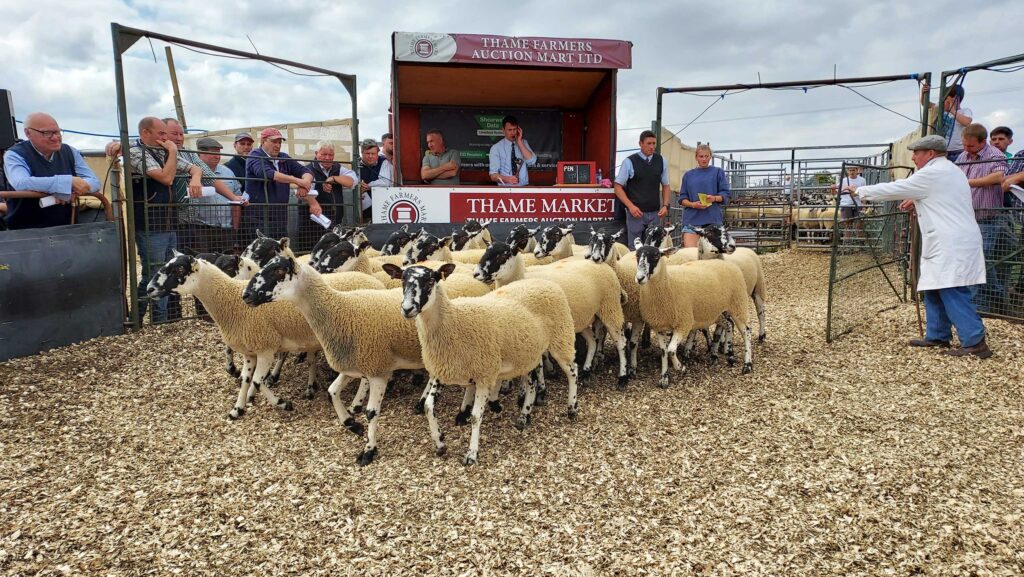Buoyant start to breeding ewe sales despite bluetongue rules
 © MAG/Charlie Reeve
© MAG/Charlie Reeve Strong demand for breeding ewes at Thame Sheep Fair kept prices almost in line with last year’s high levels, despite challenges posed by bluetongue restrictions and the effects of a dry summer on stock quality.
Higher cull ewe and finished lamb prices throughout the past month helped to add some support to the overall ewe trade.
An entry of almost 16,000 breeding ewes and lambs were presented at the sale in Oxfordshire last week, with North Country Mule theaves averaging £207.61 a head.
This was well above historic averages and down by just £1.39 a head on the year.
See also: Straw and fodder shortages hit producers as prices climb
Mule ewes were roughly £3 lower on the year at about £166 a head, with the trade topping at £198 a head.
The quality of stock being sold was mixed, with well-fleshed ewes achieving good prices, but some leaner ewes also coming forward following the dry summer, which were slightly behind on price.
Thame auctioneer Simon Draper told Farmers Weekly that mule theaves had been a good trade overall.
He mentioned that several buyers for larger grazing estates had spent the same money for lesser sheep last year when prices where high, which had impacted the size and quality of some of the theaves coming forward this year.
Texel trade
The trade for Texel-cross theaves were hit hardest by the loss of Welsh buyers as a result of bluetongue restrictions, with the average down £13 on the year at £217 a head.
Zanna Dennis, development officer at the Livestock Auctioneers Association, said: “Continental sheep were harder to place, with the absence of Welsh buyers noted, due to the Bluetongue BTV-3 restrictions.”
Mr Draper estimated that the lack of Welsh buyers due to the restrictions had taken £10-£15 a head out of the averages, with Welsh farmers buying about 2,000 head of sheep last year at the sale
Meanwhile, Suffolk-cross theaves averaged £218 a head.
He said: “The anticipation wasn’t great with the way the weather is and bluetongue restrictions which stopped the Welshman from coming.
“So, to average just £4 less on the Suffolks I think is quite an achievement.”
“Anything that was big and strong was wanted and was a good trade, and anything that was a little bit lower quality was probably £20 or so behind last year.”
Since the sale, the Welsh government has eased some restrictions to allow vaccinated sheep to be sold at designated English markets within 20km of the Welsh border.
The numbers
- 207.61 Mule theaves average at Thame (£/head)
- 218 Suffolk-cross theaves average at Thame (£/head)
- 927.50 Texel shearling rams average at Brecon (£/head)
NSA early ram sales
The early National Sheep Association Wales and Border ram sale was split across two sites this year due to bluetongue restrictions, with the first sale in Brecon on 4 August and a second sale across the border at Hereford on 5 August.
Texel shearling rams sold well at Brecon, with the average up by almost £80 a head on the year at £927.50 a head.
Meanwhile, Charolais shearling rams were back by £90 on the year at £840 a head.
The top price on the day was 3,500 guineas for a Charollais shearling ram.
Sales chairman Geoff Probert said: “There was a good clearance rate [at 70%] and it came in very well in the circumstances.”
